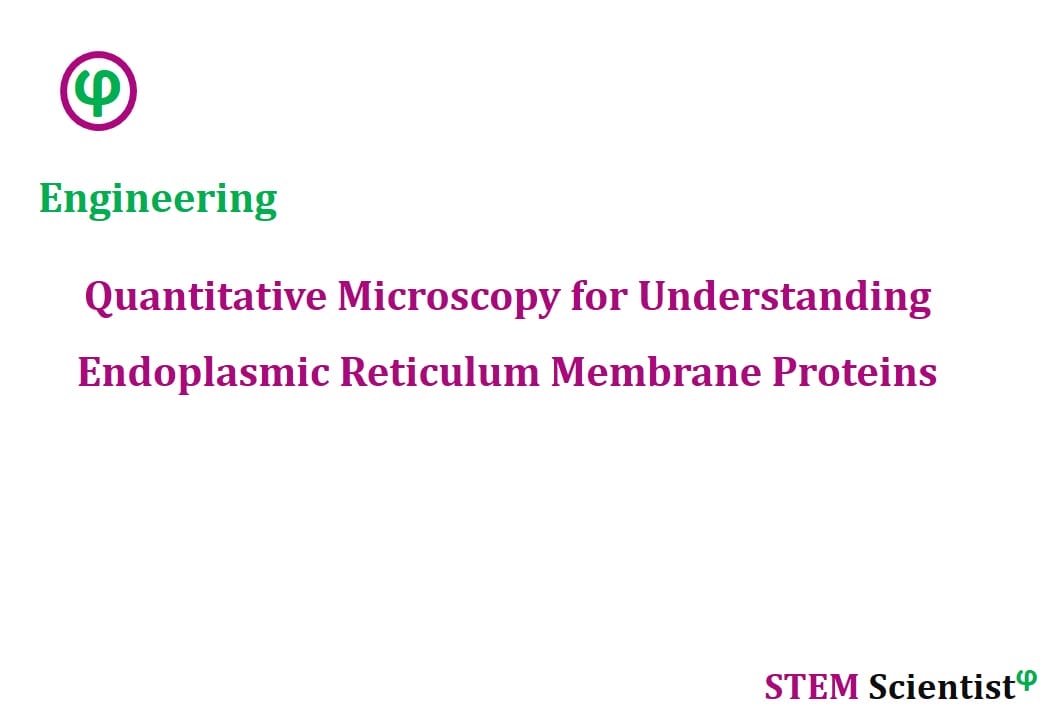
The following study was conducted by Scientists from Howard Hughes Medical Institute, Department of Biochemistry and Biophysics, University of California, San Francisco, USA. Study is published in Proceedings of the National Academy of Sciences Journal as detailed below.
Proceedings of the National Academy of Sciences (2020); 117(3): 1533-1542
Quantitative Microscopy Reveals Dynamics and Fate of Clustered IRE1α
Significance
The endoplasmic reticulum (ER) is the site for folding and maturation of secreted and membrane proteins. When the ER protein-folding machinery is overwhelmed, misfolded proteins trigger ER stress, which is frequently linked to human diseases, including cancer and neurodegeneration. Inositol-requiring enzyme 1 (IRE1) is an ER membrane-resident sensor that assembles into large clusters of previously unknown organization upon its activation by unfolded peptides. We demonstrate that IRE1 clusters are topologically complex dynamic structures that remain contiguous with the ER membrane throughout their lifetime. The majority of clustered IRE1 molecules are diffusionally trapped inside the clusters until IRE1 signaling attenuates, at which point they are released back into the ER through a pathway that is functionally distinct from cluster assembly.
Abstract
The endoplasmic reticulum (ER) membrane-resident stress sensor inositol-requiring enzyme 1 (IRE1) governs the most evolutionarily conserved branch of the unfolded protein response. Upon sensing an accumulation of unfolded proteins in the ER lumen, IRE1 activates its cytoplasmic kinase and ribonuclease domains to transduce the signal. IRE1 activity correlates with its assembly into large clusters, yet the biophysical characteristics of IRE1 clusters remain poorly characterized. We combined superresolution microscopy, single-particle tracking, fluorescence recovery, and photoconversion to examine IRE1 clustering quantitatively in living human and mouse cells. Our results revealed that: 1) In contrast to qualitative impressions gleaned from microscopic images, IRE1 clusters comprise only a small fraction (∼5%) of the total IRE1 in the cell; 2) IRE1 clusters have complex topologies that display features of higher-order organization; 3) IRE1 clusters contain a diffusionally constrained core, indicating that they are not phase-separated liquid condensates; 4) IRE1 molecules in clusters remain diffusionally accessible to the free pool of IRE1 molecules in the general ER network; 5) when IRE1 clusters disappear at later time points of ER stress as IRE1 signaling attenuates, their constituent molecules are released back into the ER network and not degraded; 6) IRE1 cluster assembly and disassembly are mechanistically distinct; and 7) IRE1 clusters’ mobility is nearly independent of cluster size. Taken together, these insights define the clusters as dynamic assemblies with unique properties. The analysis tools developed for this study will be widely applicable to investigations of clustering behaviors in other signaling proteins.
Source:
Proceedings of the National Academy of Sciences
URL: https://www.pnas.org/content/117/3/1533
Citation:
Belyy, V., N.-H. Tran, et al. (2020). “Quantitative microscopy reveals dynamics and fate of clustered IRE1α.” Proceedings of the National Academy of Sciences 117(3): 1533-1542.


